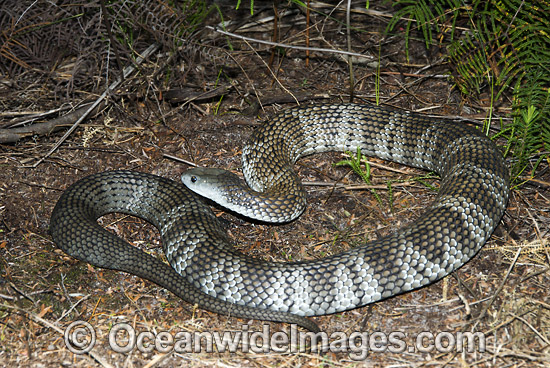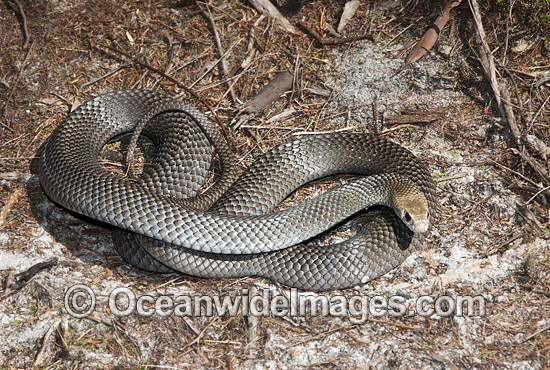Smiles,
Not everything is bigger and better in Texas!
We have a great collection of snakes here in Australia with 7 of the top 10 most venomous snakes being locals.
Quote:
•Australian snakes are the most venomous in the world.
•7 of the worlds 10 most poisonous snakes live in Australia.
1.Inland Taipan (Oxyuranus microlepidotus)
2.Eastern Brown Snake (Pseudonaja textilis)
3.Coastal Taipan (Oxyuranus scutellatus)
4.Mainland Tiger Snake (Notechis scutatus)
5.Peninsula or Black Tiger Snake (Notechis ater niger)
•The first five snakes and most of the snakes on the list are Australian.
My earliest encounter with a snake was running around a corner of the house as a 5yo kid and discovering one curled asleep directly under my next footstep, I still dont recall how I was able to rotate 360 degrees and run off in the other direction without planting my foot down right on top of it, but from that time I have had a healthy respect for snakes, encountering many more while growing up.
In all those encounters I simply let the snake and I depart to our own destinations on a live and let live approach.
Snakes in Australia have been decimated by human actions and many are protected with some on endangered lists.
When I got married and started a family I had a rural property not dis-similar to Austin Acres (to store my own projects or twisted metal as my wife calls it) and before moving the family into a suburban house I averaged an encounter with a tigersnake @ once per summer, (these being #4 in the list), over a 15 year period.
While preferring to live and let live, I would reluctantly dispatch these with a long handled spade due to proximinity to my back yard and children (3 were dispatched in the backyard).
My main concerns were to avoid increased risk to my young children by a nest of snakes being born on the property and becoming resident, or returning each breeding season.
The Tiger grows to about 3 feet in length however most of my encounters were of 18" to 2 feet in length, they prefer to get out of your way, and only fight when cornered, but are agressive when they choose to be so.

Quote:
Image Description: Mainland Tiger Snake (Notechis scutatus). An aggressive snake when aroused, mostly active during daylight hours. Feeds mainly on frogs. Also known as Eastern Tiger Snake. Dorrigo, New South Wales, Australia. Extremely venomous and dangerous snake.
Photographer Copyright: © Gary Bell/OceanwideImages.com
I live on volcanic plains, and nearby in a hilly area called the You Yangs about 10 miles away, the predominant snake is the Brown Snake (these being #2 on the list), while sight seeing in the car in that area I drove past a Brown snake in the order of 5' in length and perhaps 6" across at its thickest point, hence I no longer visit that area during summer - smiles.
The Brown Snake is apparantly very agressive, (obviously larger than the Tiger) and very territorial, reputed to challenge and chase humans off its nesting grounds.

Quote:
Image Description: Eastern Brown Snake (Pseudonaja textilis). Eastern Australia. A swift-moving, diurnal snake that feeds primarily on small mammals and reptiles. Venomous and dangerous snake.
Photographer Copyright: © Gary Bell/OceanwideImages.com
I was therefore always concerned I would encounter one of these in the backyard, or have a nest take up residence in my shed etc.
One News Years Eve I was strolling back with the kids from next door, and discovered a very small brown snake on the driveway (perhaps only 4-6" long) and immediately saw it was not a tigersnake due to the all brown skin and lack of distinctive yellow stripes. Concerned that I had discovered the first of many hatchlings of a Brown Snake's litter I dispatched it quickly and become concerned its mum or dad might come looking for it, (and me) - smiles.
Weeks later at the Melbourne zoo while visiting the reptile display, I found many more of the same small brown snakes in a display, although these were labelled as the "Olive legless lizard", often mistaken for the Brown Snake and critically endangered in Victoria because of that and the loss of grassland habitat due to property redevelopment.

Quote:
Olive legless lizard - Delma inorata. This beautiful legless lizard is rarely encountered, but is often mistaken for a juvenile brown snake and is killed as a result. As its name suggests, the Olive legless lizard is olive in color with a yellow underside and each scale is edged with black. With a SVL (snout to vent length) of around 13cm, the tail of the legless lizard is up to four times the length of the body. It survives in grassy woodland and native grassland between s.e South Australia to the Darling Downs of s.e Queensland.
In Victoria, Native Tussock Grasslands cover just 0.6% of their previous extent. In the Victorian Volcanic Plains 8 of 56 mammal species are extinct and another 11 are in severe decline, occupying less than 10% of their former range.
The Native Grasslands of Victoria have been listed as Critically Endangered! Read more....
Direct quote- VNPA Grassland clearing trend.
http://www.itsawildlife.com.au/index.php?page=olive-legless-lizard
Of all the snakes I have had to despatch due to proximity to my house and kids, I have always regretted the mistaken identity of that endangered legless lizard, and not being able to apply my live and let live approach.
I was therefore pleased to read of Gary's post, the correct identification of the little Bull snake (apparantly often mistaken for a Rattler) and the decision to catch and release it, rather than dispatch it.
I would encourage a live and let live approach to all snakes, unless they are threatening the safety of your kids or family.
(for further info and photos on Australian Snakes see
http://www.oceanwideimages.com/categories.asp?cID=278
Regards
Mark Pilkington





